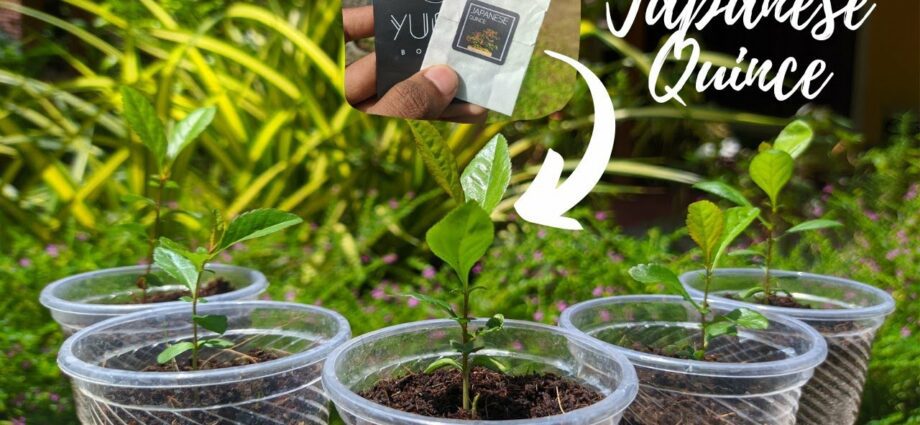Contents
Japanese quince from seeds at home: when to plant, how to grow
Japanese quince (henomeles) is popularly called “northern lemon”. Sour fruits are rich in vitamin C, they make a very tasty jam. In central Russia, it is customary to propagate quince by seeds; cuttings can also be used for this purpose. The plant must be properly cared for, and then it will give a good harvest. In this article, we will show you how to grow a quince from seeds.
Quince from seeds will begin to bear fruit only after the formation of a shrub.
How to grow a quince from seeds
You must buy at least one ripe fruit. It contains many seeds, from which gardeners grow the plant. When to plant quince seeds? Better to do this in late autumn. It is allowed even after the first snow falls, then in the spring you will notice friendly shoots. If the seeds are planted in spring, then they will not sprout immediately, but somewhere after 3 months. Therefore, autumn sowing is preferable.
Quince is undemanding to soil, but very responsive to organic fertilizers.
Used for feeding the bush and mineral. For planting in acidic soils, you must first add a deoxidizer.
The plant easily tolerates both drought and moisture. But spring frosts can kill the buds, and you will be left without a crop.
Japanese quince from seeds at home
Plant seeds must undergo stratification: they are placed in a humid environment at a low temperature. After the emergence of seedlings, they are transplanted into the substrate. At home, sand is used for stratification in combination with peat chips (ratio 1,5 to 1). You can also use just sand.
A layer of sand is poured into the bottom of an ordinary pot. Then the seeds are laid out, evenly distributed over this layer. From above they are again covered with sand. The contents of the pot are well watered and placed in a plastic bag. Store the container in a cool place. A cellar or refrigerator will do, the main thing is to monitor the temperature.
It should vary between 0 and +5 degrees.
In this state, the seeds are kept until seedlings appear (about 3 months). At the same time, they are checked every two weeks and the moisture of the sand is monitored.
Of course, a plant made from cuttings will bear fruit faster. Quince from seeds will not begin to bear fruit immediately, you will have to wait until a shrub is formed. However, in taste, it will be in no way inferior to its cuttings counterparts.
Try growing your own quince, which is a great alternative to lemons. You can cook delicious compotes, jams from it and enjoy yourself all year round.










